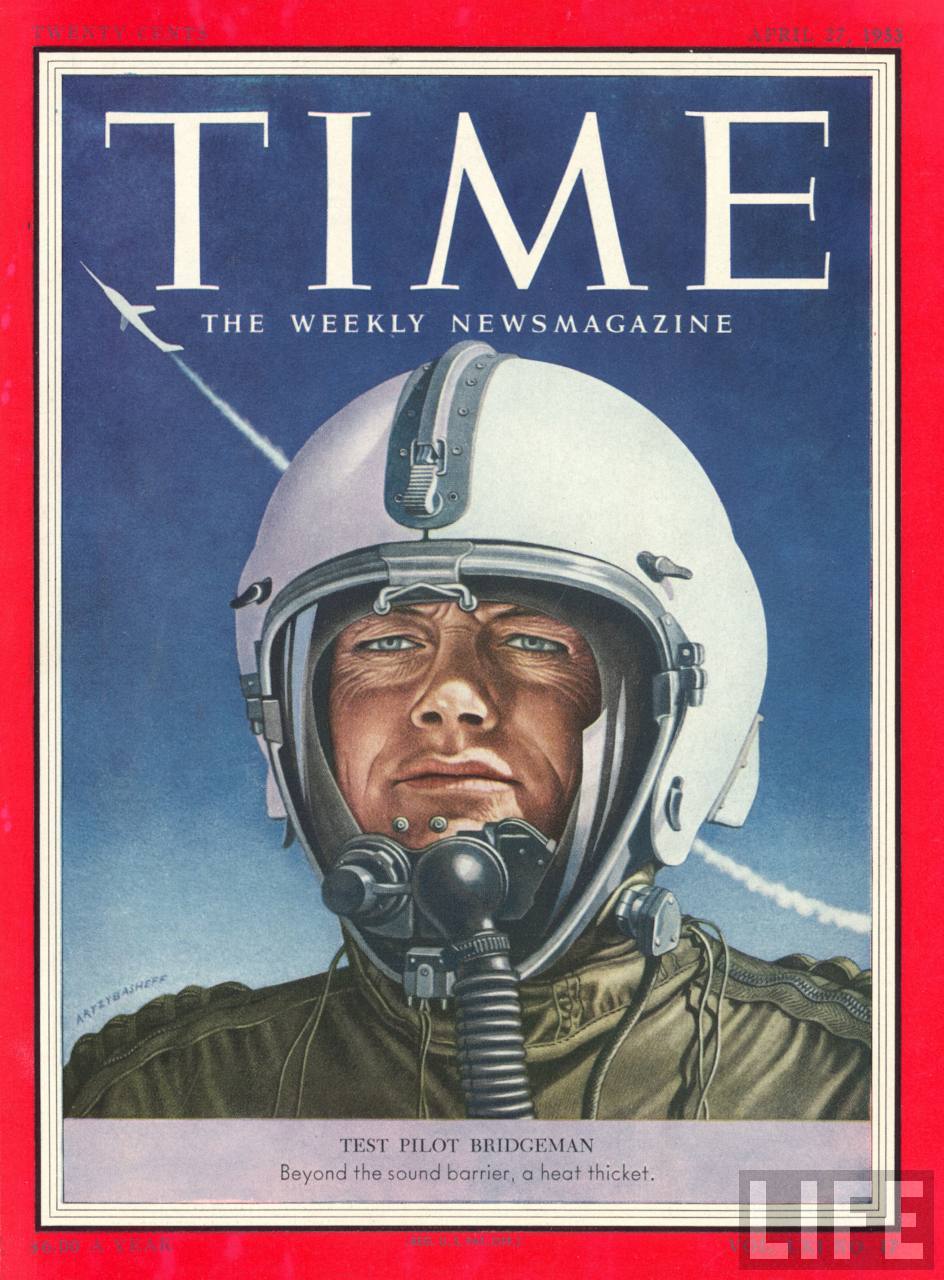
7 August 1951: Douglas Aircraft Company test pilot William Barton Bridgeman flew the rocket-powered U.S. Navy/NACA/Douglas D-558-2 Skyrocket, Bu. No. 37974 (NACA 144), to a record speed of Mach 1.88 (1,245 miles per hour/2,034 kilometers per hour) at Muroc Dry Lake (later Edwards Air Force Base) in the high desert of southern California.
The D-558-2 was airdropped at 34,000 feet (10,363 meters) from a Navy P2B-1S Superfortress, Bu. No. 84029 (a U.S. Air Force Boeing B-29-95-BW Superfortress, 45-21787, transferred to the Navy and heavily modified as a drop ship) flown by another Douglas test pilot, George Jansen.
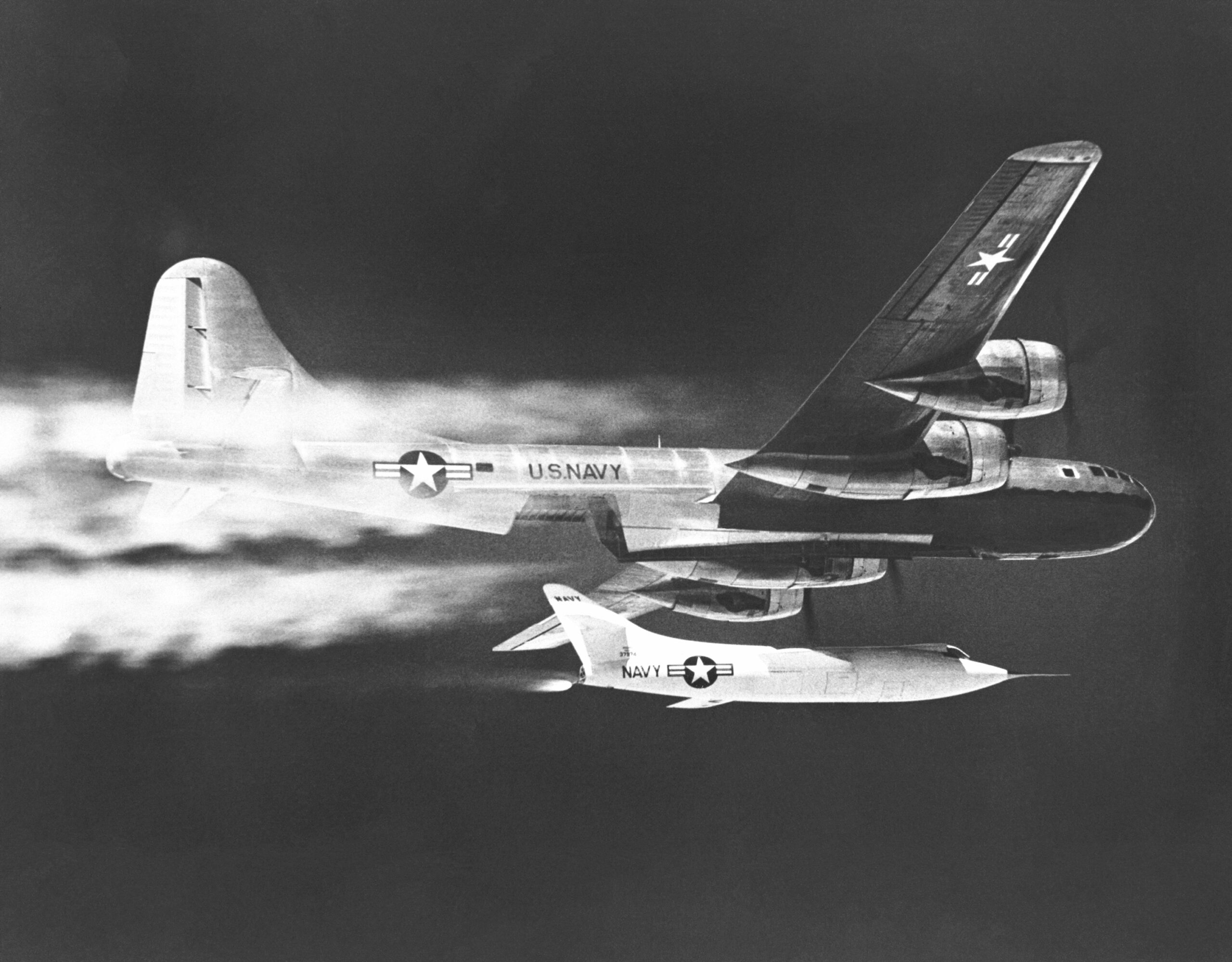
In his autobiography, Bridgeman described the flight:
We are at 34,000 feet. My cue. Ten cold minutes preparing the ship for flight. The trap door springs and releases the captive Skyrocket swollen with explosive propellants. She blasts into flight.
Thirty seconds and I am supersonic. Sixty-eight thousand feet and this is it. Over the rim. Easy. The electrically controlled stabilizer flies her now. It takes over for me. At .6 G I push over just enough to get my speed. I am on the ragged edge between .6 G and .8 G. It is working! Everything is going according to my plan. It is so easy this time. Surely I cannot be breaking my last record without having to pay for it. The Machmeter is moving up, fluttering toward the Number 2. . . the rockets sputter and the fuel is gone. That’s all she wrote.
Late that afternoon the official speed attained by the Skyrocket reduced from data and film came out of the aerodynamicists’ office. Mach 1.88.
—The Lonely Sky, William Bridgeman, Castle and Company LTD, London, 1956, Chapter XXII at Page 260.
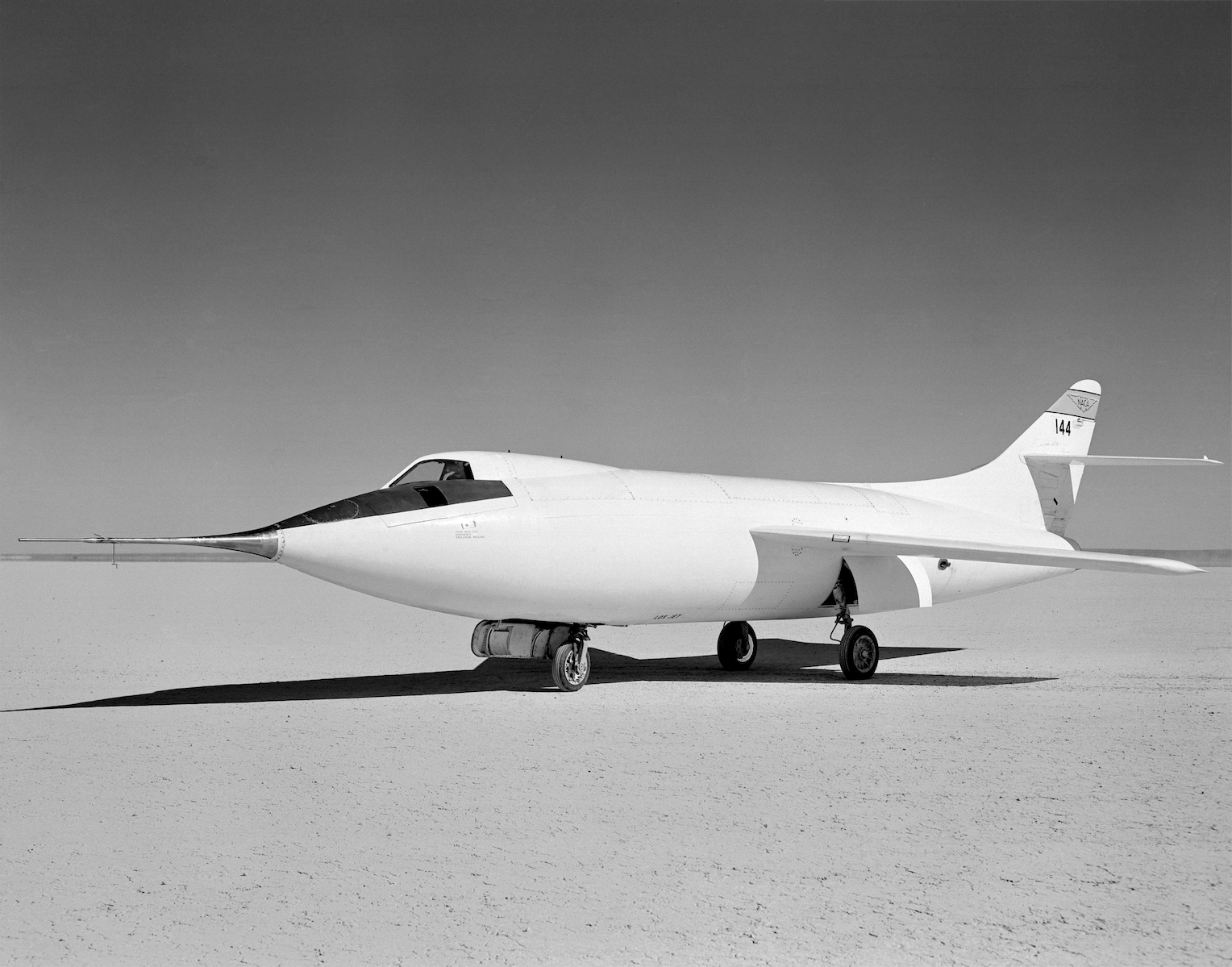
Bill Bridgeman had been a Naval Aviator during World War II, flying the Consolidated PBY Catalina and PB4Y (B-24) Liberator long range bombers with Bombing Squadron 109 (VB-109), “The Reluctant Raiders.” Bridgeman stayed in the Navy for two years after the end of the war, then he flew for Trans-Pacific Air Lines in the Hawaiian Islands and Southwest Airlines in San Francisco, before joining the Douglas Aircraft Company as a production test pilot. He flew new AD Skyraiders as they came off the assembly line at El Segundo, California. Bridgeman soon was asked to take over test flying the D-558-2 Skyrocket test program at Muroc Air Force Base.
The D-558-II Skyrocket was Phase II of a planned three phase experimental flight program. It was designed to investigate flight in the transonic and supersonic range. It was 46 feet, 9 inches (14.249 meters) long with a 25 foot (7.62 meter) wing span. The wings were swept back to a 35° angle. The Skyrocket was powered by a Westinghouse J34-WE-40 11-stage axial-flow turbojet engine, producing 3,000 pounds of thrust, and a Reaction Motors LR8-RM-6 four-chamber rocket engine, which produced 6,000 pounds of thrust. The rocket engine burned alcohol and liquid oxygen.
There were three D-558-2 Skyrockets. Between 4 February 1948 and 28 August 1956, they made a total of 313 flights. The Skyrocket flown by Bill Bridgeman to Mach 1.88 is in the collection of the Smithsonian Institution National Air and Space Museum.
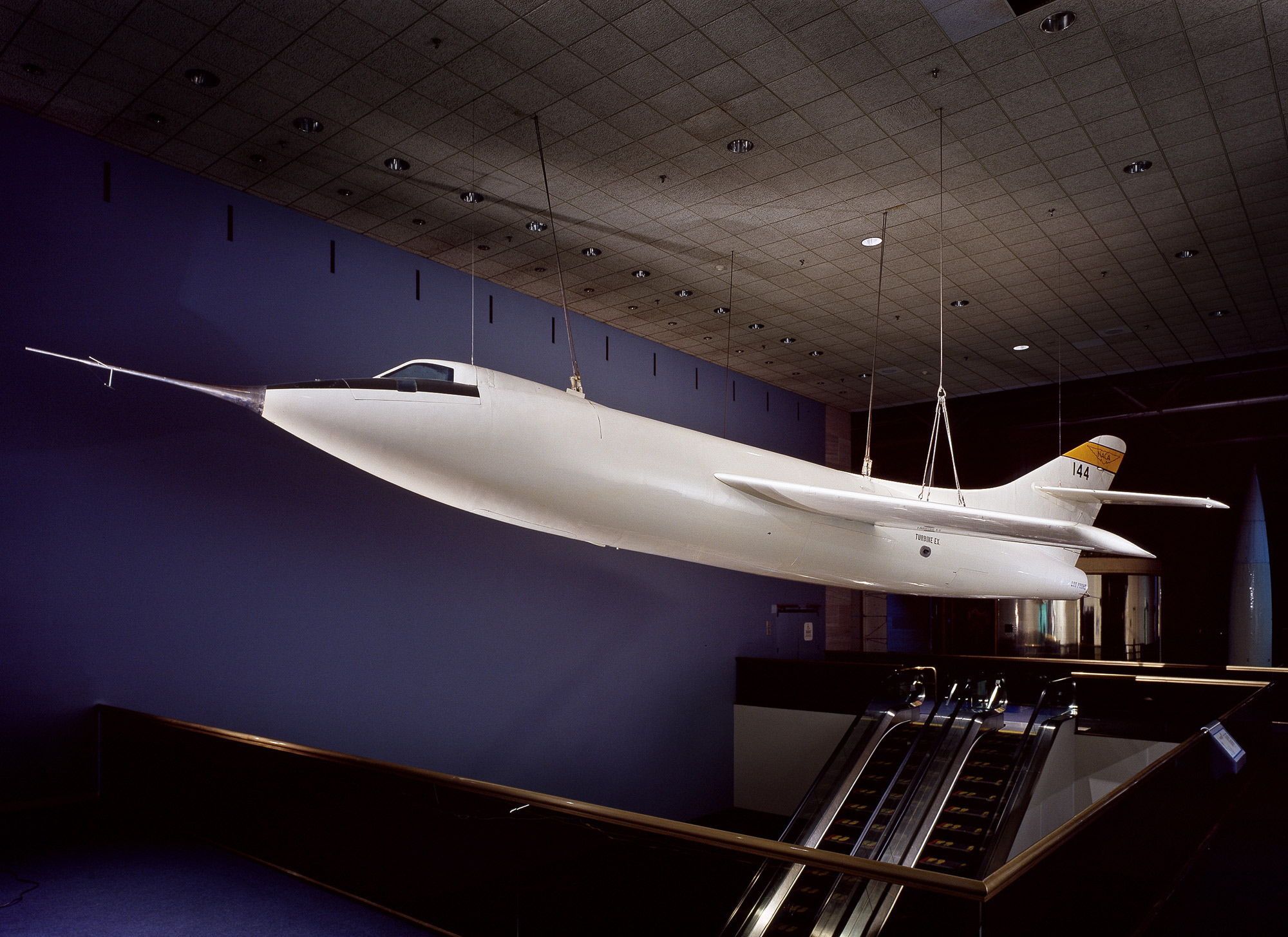
© 2020, Bryan R. Swopes
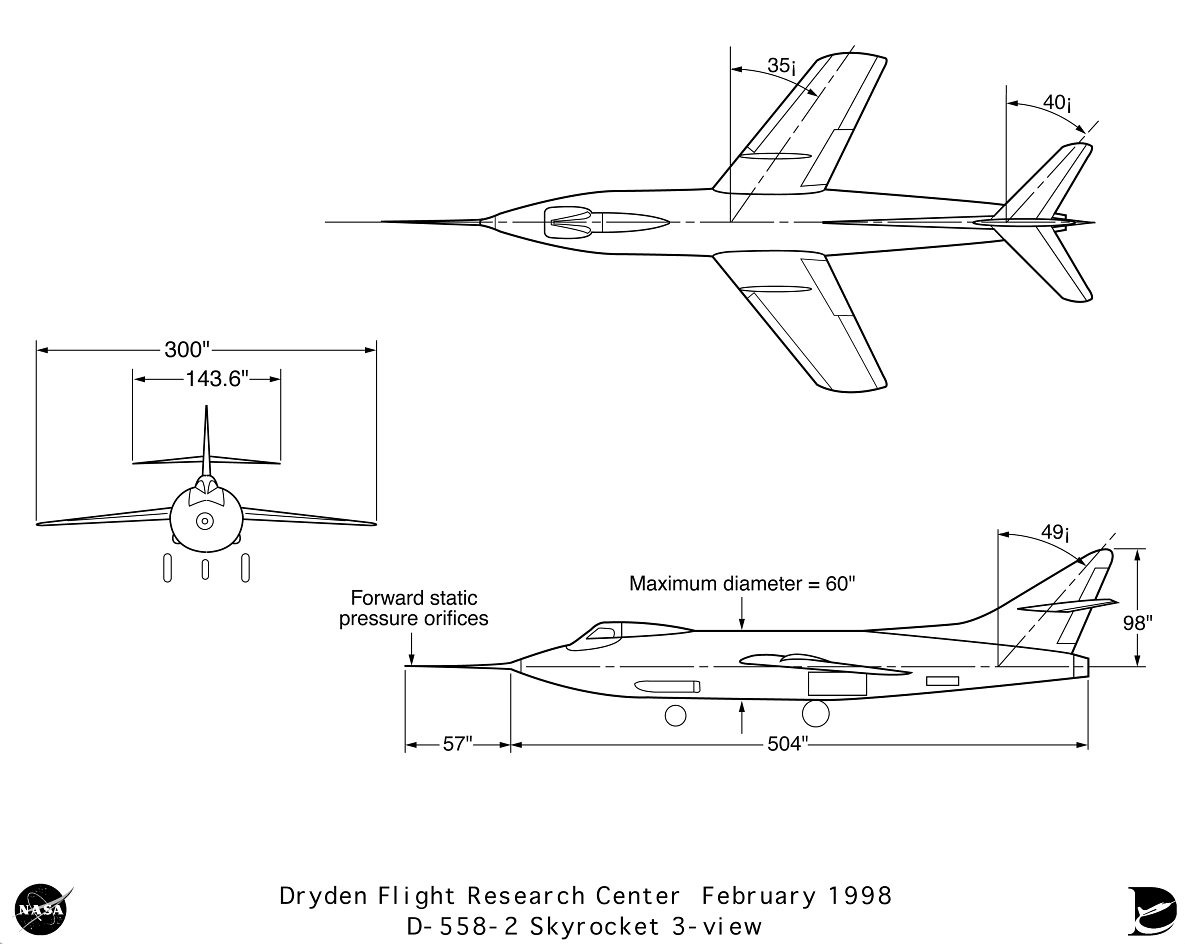
Just wanted to drop a notice about you possibly amending your page about the Martin Mars. While your posted article of May 19, 2015 stated that only one Mars remains, that is not true. Two Martin Mars still exist. Both are still in the possession of the Coulson Group, and are stationed here at Sproat Lake, just outside of Port Alberni, on Vancouver Island, British Columbia. While the Philippine Mars has been painted back into her original US Navy colours, and is being restored so she can be shipped to an aviation museum in Pensacola, Florida, the Hawaii Mars is currently in a 30-day contract fighting wild forest fires in B.C.
Thanks, Stephen, for the corrections. I will modify the post as soon as I get a chance. –Bryan
…was “SkyFlash” the “third phase” of the Douglas “Sky” high-speed flight program. The SkyFlash competed with the N.A.A. X-15.
Possibly. Douglas proposed a D-671 and/or D-684 hypersonic research rocketplane to the U.S. Navy. Some sources suggest that it was intended to reach an altitude of 700,000 feet (about twice as high as the X-15 flew) and Mach 7.
Hi Bryan. Not sure this is correct about the Douglas Skyrocket…”The Skyrocket was powered by a Westinghouse J34-WE-40 11-stage axial-flow turbojet engine, producing 3,000 pounds of thrust…” I don’t see any air intakes for a turbojet engine anywhere on this aircraft. The rocket motor? Sure. A turbojet as well? Not so sure about that. Otherwise, another interesting post!
The D-558-II was originally configured to take off from the ground and was powered by a turbojet engine. The switch to air launch and deletion of the turbojet came later in the program.